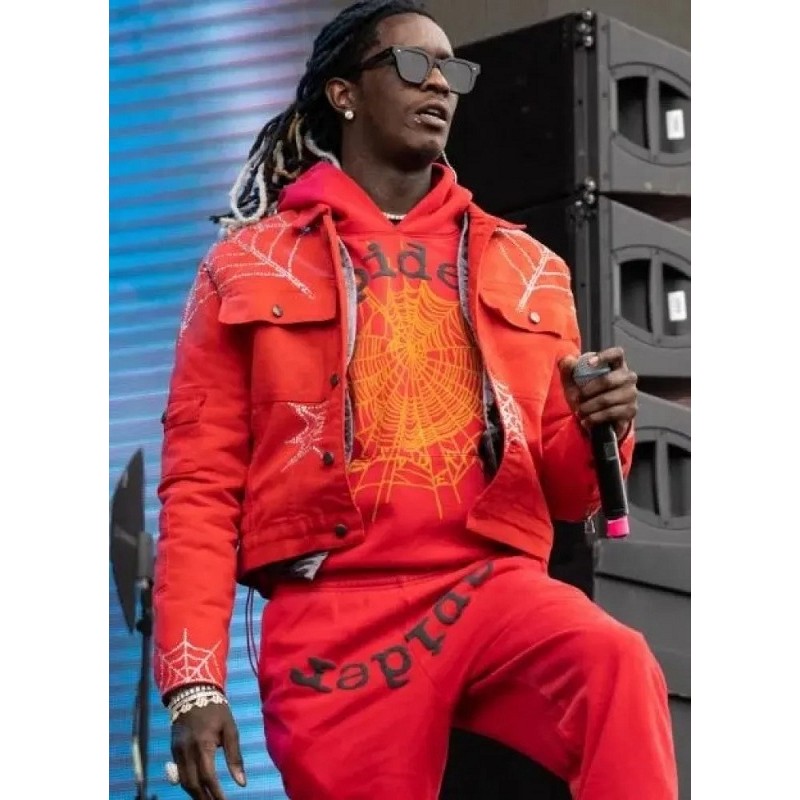- FREE Express Shipping On Orders $99+

The Intersection of Fashion: Satisfying Desires for Inexpensive and Stylish Clothing
Fashion, an ever-evolving phenomenon, not only reflects societal trends but also caters to our innate desires for both style and affordability. In today’s globalized world, where trends spread rapidly through digital platforms and fast fashion dominates retail landscapes, the relationship between cost and style has become increasingly intertwined. Visit now https://spiderofficial.us/ This article explores how fashion satisfies our cravings for inexpensive yet stylish clothing, examining the dynamics of consumerism, industry practices, and the societal impacts of this intersection.
Fashion serves as a medium through which individuals express themselves,
communicate identity, and navigate social landscapes. Whether it’s following the latest runway trends or curating a personal style from high street collections, clothing choices often reflect cultural influences and personal aesthetics. However, the accessibility of fashion—especially in terms of affordability—plays a pivotal role in shaping consumer behavior and satisfaction.
The rise of fast fashion exemplifies this intersection of affordability and style. Brands like Zara, H&M, and Forever 21 have revolutionized the industry by offering runway-inspired designs at significantly lower prices, making current fashion trends accessible to a wider demographic. This democratization of style has empowered consumers to experiment with diverse looks without breaking the bank, thereby fulfilling their desire for both variety and affordability.
Moreover, technological advancements and global supply chains have streamlined production processes, allowing brands to quickly bring new designs from concept to stores. This fast-paced cycle ensures that fashion remains dynamic and responsive to consumer demands for freshness and novelty. Consequently, consumers can regularly update their wardrobes with trendy pieces, satisfying their desire to stay stylish without making substantial financial commitments.
However, the affordability of fast fashion raises important questions about its ethical and environmental implications. The relentless pursuit of low costs often leads to exploitative labor practices in developing countries, where garment workers endure poor working conditions and minimal wages. Additionally, the environmental toll of fast fashion—characterized by excessive waste, pollution, and resource depletion—poses significant challenges to sustainability.
Critics argue that the pursuit of inexpensive clothing has fueled a culture of disposability,
where garments are treated as short-term investments rather than enduring pieces. This mindset not only contributes to environmental degradation but also undermines the craftsmanship and durability of traditional garment production. As consumers become more aware of these issues, there is a growing demand for sustainable and ethical alternatives within the fashion industry.
In response to these concerns, a movement towards sustainable fashion has gained momentum. Ethical brands prioritize transparency, fair labor practices, and eco-friendly materials, appealing to conscientious consumers who seek to align their fashion choices with ethical values. By promoting durability and timeless designs, these brands encourage a shift away from disposable fashion towards a more sustainable consumption model. Check it now Sp5der
Moreover, the concept of second-hand and vintage clothing has gained popularity as a form of sustainable fashion consumption. Thrift stores, online marketplaces, and clothing swaps offer consumers the opportunity to explore unique styles while reducing their environmental footprint. Embracing pre-loved garments not only extends the lifecycle of clothing but also promotes a more mindful approach to fashion consumption.
The dialogue surrounding fashion’s impact on society extends beyond consumer behavior and industry practices. Fashion influences cultural norms, challenges stereotypes, and serves as a platform for social change. The democratization of style through affordable fashion has empowered individuals from diverse backgrounds to express their identities and challenge traditional notions of beauty and fashion elitism.
Furthermore, fashion’s ability to adapt and reflect societal values is evident in its response to cultural movements and social issues. From gender-neutral fashion to inclusive sizing, brands are increasingly embracing diversity and representation, catering to a broader spectrum of consumers. This inclusivity not only fosters a sense of belonging within fashion communities but also encourages authenticity and self-expression among individuals.
Conclusion
fashion satisfies our desire for inexpensive and stylish clothing by navigating the complex interplay between affordability, accessibility, and consumer expectations. While fast fashion offers immediate gratification and trend-driven options, it also raises important ethical and environmental considerations. As consumers become more informed and conscientious, there is a growing demand for sustainable alternatives that prioritize longevity, ethics, and environmental stewardship.
Ultimately, the evolution of fashion reflects broader societal shifts towards sustainability, inclusivity, and responsible consumption. By critically examining the intersection of cost and style, we can foster a fashion industry that not only satisfies our desires but also contributes positively to our communities and the planet we share.
